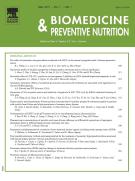Luteolin extracted from Platycodon grandiflorum protects retinal pigment epithelial cells from oxidative stress-induced caspase-3 dependent apoptosis - 06/06/12

Abstract |
Luteolin, a flavonoid isolated from the flowers of Platycodon grandiflorum (balloon flower, Campanulaceae), has been examined with regard to the inhibition of apoptosis in human retinal pigment epithelium (RPE) cells under oxidative stress. Luteolin from P. grandiflorum protected human RPE cells from oxidative stress-induced cell death. The toxicity of the effective luteolin (1μM) was very low. Luteolin significantly inhibits reactive oxygen species (ROS) generation in human RPE cells under t-BOOH induced oxidative stress. T-BOOH induced activation of caspase-3 was reduced by 1μM luteolin, from 1.7 fold to 1.1 fold, compared with untreated control (P<0.05). These results suggest that luteolin from P. grandiflorum may be used as a potential cytoprotective agent for oxidative stress-induced apoptosis in RPE cells.
Le texte complet de cet article est disponible en PDF.Keywords : Apoptosis, Caspase-3, Luteolin, Platycodon grandiflorum, ROS, Retinal pigment epithelium
Plan
Vol 2 - N° 2
P. 77-80 - avril 2012 Retour au numéroBienvenue sur EM-consulte, la référence des professionnels de santé.
L’accès au texte intégral de cet article nécessite un abonnement.
Déjà abonné à cette revue ?

